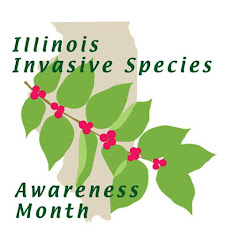Recent find in Wisconsin prompts alert to Illinois residents and visitors
 |
| New Zealand Mud Snails (Photo courtesy www.invasive.org) |
SPRINGFIELD, IL – The Illinois Department of Natural Resources (IDNR) is asking for anglers, hunters, trappers and boaters to “Be A Hero, Transport Zero” and be on the lookout for a new aquatic invasive species now found in small streams of the Midwest. The Wisconsin Department of Natural Resources (WDNR) reports the New Zealand mud snail has been found in Black Earth Creek, Dane County, Wisconsin.
“This is a significant and disappointing find in Wisconsin,” said Bob Wakeman, who coordinates the WDNR aquatic invasive species efforts. “The New Zealand mud snail can be extremely prolific, has altered the food chain, and may be having an impact on fish populations in Western streams. We don’t know what the impact will be in Wisconsin, but we do know that there is no good way to eradicate the snails so we are focusing on containing them as quickly as we can and ask for citizens’ help in doing that as well.”
Kevin Irons, Aquatic Nuisance Species Program manager for IDNR fisheries said the New Zealand mud snail has, to date, only been found in the Illinois waters of Lake Michigan, and the spread is facilitated by water users.
“Where found in creeks, anglers, hunters, and trappers can transport snails, most commonly on boots, waders, and equipment such as duck decoy anchors,” Irons said. “We want water users to remember our motto when leaving a body of water to ‘Stop Aquatic Hitchhikers!’ – and to ‘Be a Hero – Transport Zero.’”
The ‘Be a Hero – Transport Zero’ campaign recommends three simple steps: 1) Remove plants animals and mud equipment; 2) Drain all water from your boat and gear; and 3) Dry everything thoroughly with a towel.
More information about cleaning your equipment can be found at www.transportzero.org.
Dane County, Wisconsin is approximately 25 miles from the Illinois state line, meaning New Zealand mud snails are only about 45 miles from Illinois streams.
These snails can be transported by mud on waders, decoy weights, boats and trailers, or other clothing and equipment that they may come in contact with.
“There is little that we can do to target and detect these types of species without the help of sportsmen and women. We depend on best practices and cleaning equipment that will reduce the spread of these and other nuisance species into and across Illinois,” Irons added.
To find out more about the New Zealand mud snail, check the USGS Nonindigenous Aquatic Species website at http://nas.er.usgs.gov/queries/FactSheet.aspx?SpeciesID=1008.
More resources:
The Wisconsin DNR press release on most recent finding in the Midwest can be viewed at http://illinoisisam.blogspot.com/2013/11/new-zealand-mud-snails-discovered-in.html.
Be A Hero – Transport Zero campaign video can be found at http://www.youtube.com/watch?feature=player_embedded&v=z83g72eZ1RM
To report New Zealand mud snail locations or other Aquatic Nuisance Species, please call the Illinois ANS Program office at 217-785-8772.
For a photo image of the mud snail, check the Invasive.org website at this link:
http://www.invasive.org/browse/detail.cfm?imgnum=5425632





